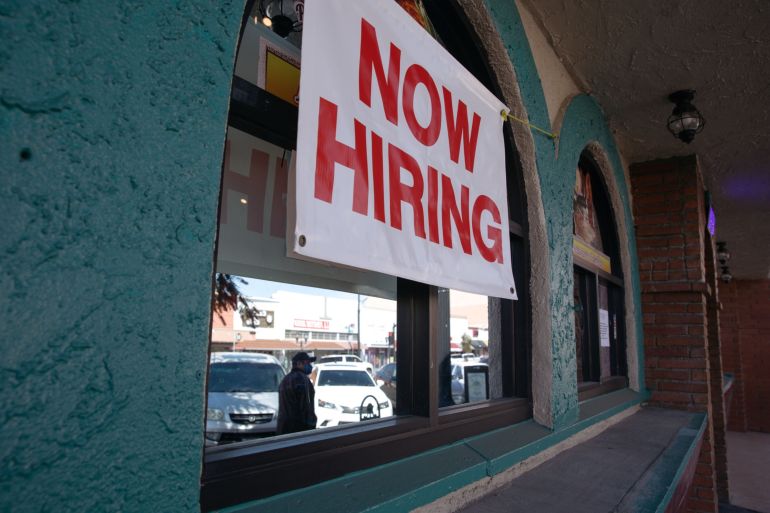US jobless claims tick back above 200,000 as Omicron spreads
Jobless claims, a proxy for layoffs, ticked up slightly last week.

The number of Americans filing claims for unemployment benefits from states drifted up slightly last week, prompting speculation that the Omicron variant of the coronavirus could be casting a shadow over the United States labour market recovery.
Weekly jobless claims – a proxy for layoffs – rose to 207,000 in the week ending January 1, the US Bureau of Labor Statistics said on Thursday. That is an increase of 7,000 over the previous week’s revised level.
Keep reading
list of 4 itemsChina’s revised state secrets law has come into force. Here’s what to know
In Japan, book criticising trans ‘craze’ sparks rare culture-war skirmish
Former Binance CEO CZ sentenced to four months
Even though the headline number moved up, it is still low by historical standards, signalling that a tight labour market will likely continue to eclipse any disruptions resulting from Omicron, whose spread has triggered flight cancellations and a wave of workers calling in sick.
“The Omicron surge in coronavirus cases may have helped to prop up claims, but it’s difficult to say conclusively since the claims data are still subject to seasonal noise,” said Nancy Vanden Houten, lead economist at Oxford Economics. “Assuming any layoffs related to Omicron are limited amid tight labour market conditions, we expect initial claims to continue to hover around the 200,000 mark.”
The four-week moving average for jobless claims – which helps smooth out some of the weekly noise – was 204,500, an increase of 4,750 from the previous week’s revised reading.
And the number of Americans currently collecting regular unemployment benefits – a metric known as continuing claims – rose by 36,000 in the week ending December 25 to 1.75 million.
“Continued claims are currently around pre-pandemic levels and could eventually fall further as more workers return to the labour market to take advantage of solid wage gains. Omicron could delay that process, however,” said Vanden Houten.
A more comprehensive snapshot of the US labour market is due on Friday with the release of the closely watched monthly jobs report from the Department of Labor.
That report will look back on December, but some economists are warning that Omicron could have a big impact on January figures.
The new variant is not the only headwind facing the US labour market recovery. An ongoing shortage of workers is also dragging on jobs creation.
On Tuesday, the Department of Labor reported that there were 10.6 million job openings at the end of November, which is high by historical standards – while Americans are feeling so confident about their employment prospects that they continue to quit their jobs in record numbers.
Economists have been scratching their heads over why there are so few workers available for businesses to hire, but factors ranging from fear of contracting COVID-19, to childcare challenges, baby boomers taking early retirement, and workers unlocking their entrepreneurial spirits to start businesses of their own are believed to be factors.
Whatever the cause, workers are in a great bargaining position – and that leverage is evident in average hourly earnings, which increased 4.8 percent in November from the same period a year ago.